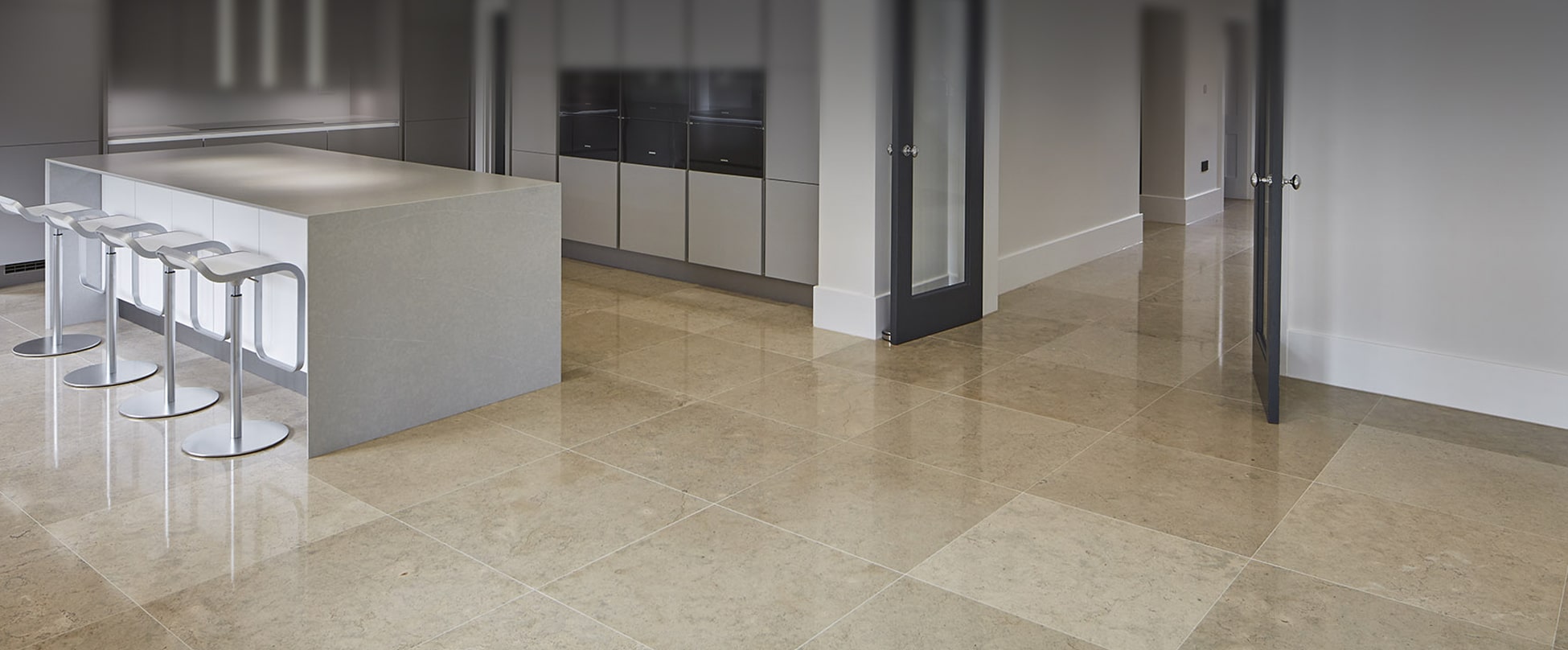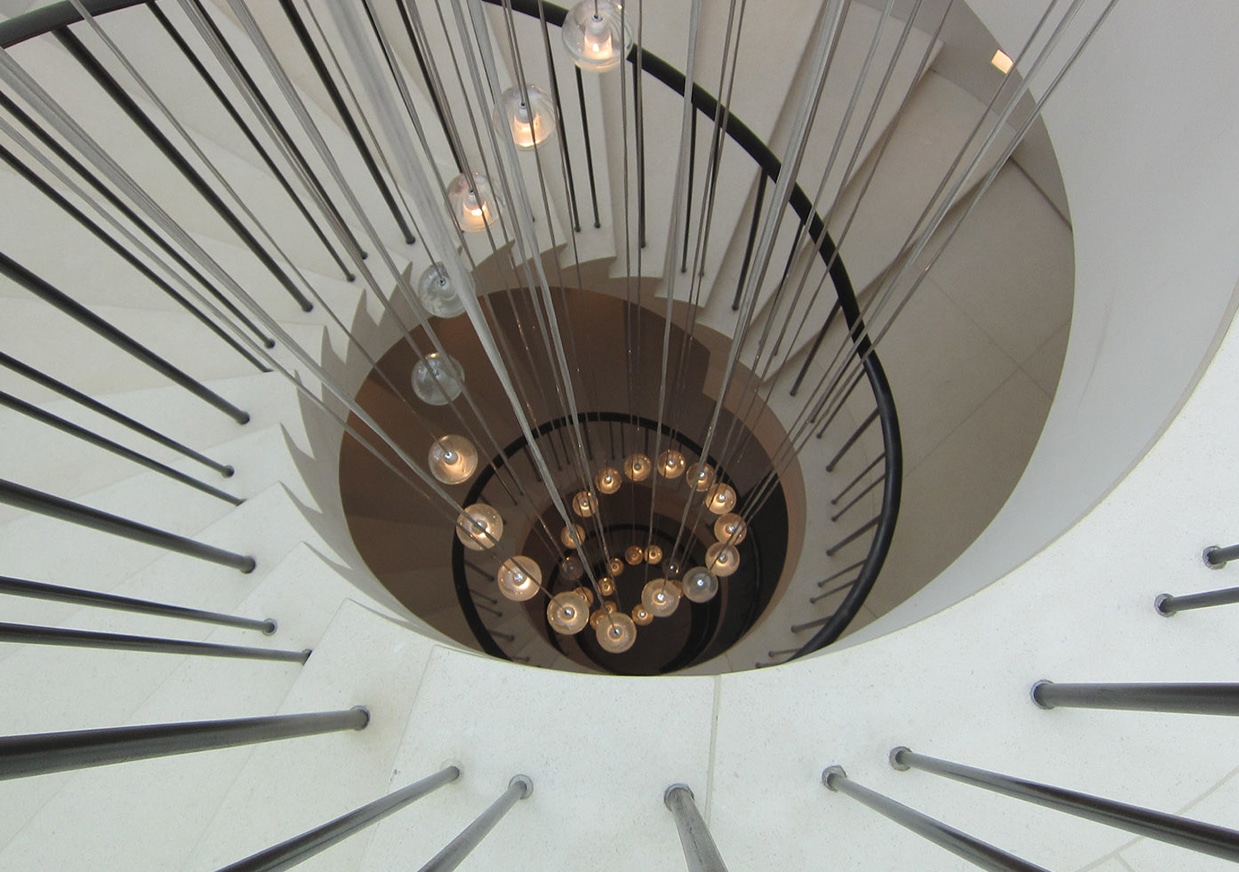Achieving projects in the right timescale and cost: what’s the secret?
Ken Jones, Director at AF Jones Stone Interiors explains why building strong consultative process with the client, contractor and other trades on site is essential to a natural stone project.
The Comprehensive Approach to Stone Masonry: Integrating Design, Production, and Installation
Main contractors increasingly seek specialist subcontractors who can deliver not just a segment of the work but the entirety of the process required to achieve the final product. This comprehensive approach, especially in the field of stone masonry, involves a seamless integration of design, production, and site fixing. Understanding how these elements interact and support one another is crucial for the successful completion of stone masonry projects.
The Importance of an Integrated Service
The traditional division of stone masonry into separate services — some offering only fixing services and others only supply — is giving way to a more integrated approach. This holistic method is predicated on the belief that the best outcomes in stone masonry are achieved when the knowledge from fixing, supply, and design is combined throughout the entire process. This synergy ensures that every stage, from the initial jointing and dimensional control through to production and finally site installation, benefits from comprehensive expertise.
Controlling Risks Through Knowledge Sharing
One of the key advantages of this integrated approach is the efficient control of risks associated with the project. By involving the same team in the design, production, palletising, delivery, and installation phases, potential issues can be identified and addressed early on. This preemptive problem-solving strategy not only saves time but also significantly reduces costs associated with late-stage modifications or corrections.
Leveraging Expertise Across Boundaries
The true value of combining fixing, supply, and design knowledge lies in the ability to apply insights gained in one area to improve processes in another. For instance, understanding the complexities of site installation can inform the design phase, ensuring that the stone components are configured for efficient and straightforward installation. Similarly, insights from the design and production stages can facilitate better planning and execution during the fixing phase, ensuring a smoother transition from concept to reality.
Benefits of a Full-Service Stonemasonry Approach
- Holistic Project Understanding: By overseeing every stage, from design through installation, the stonemasonry team develops a comprehensive understanding of the project, allowing for more cohesive and consistent execution.
- Efficiency and Cost-Effectiveness: Integrating knowledge across all phases of the project allows for more efficient use of resources, resulting in cost savings and timely project completion.
- Quality Assurance: A unified approach ensures that the quality standards are consistently maintained throughout the project, resulting in a superior final product.
- Innovative Solutions: The cross-pollination of ideas among design, production, and installation experts fosters innovation, leading to creative solutions that enhance the project’s aesthetic and functional outcomes.
Conclusion
The evolving demands of the construction industry require stonemasonry specialists to adopt a comprehensive approach that encompasses design, production, and installation. This integrated methodology not only optimises efficiency and cost-effectiveness but also ensures that the final product reflects the highest standards of craftsmanship and quality. For main contractors, choosing a stonemasonry subcontractor that embodies this holistic approach is key to achieving outstanding results in their projects.
Frequently Asked Questions on Integrated Stonemasonry Services
- Why is an integrated approach important in stonemasonry? An integrated approach ensures seamless coordination across all phases of a stonemasonry project, from design and production to installation. This method allows for the efficient management of risks, leveraging expertise across different stages to enhance quality and efficiency, ultimately delivering a superior final product.
- How does combining fixing, supply, and design knowledge benefit a stonemasonry project? By integrating these areas of expertise, stonemasons can apply insights from one phase to improve processes in another, ensuring that each step is informed by a comprehensive understanding of the project as a whole. This cross-disciplinary knowledge sharing minimises risks and fosters innovation, leading to more effective solutions and a streamlined project timeline.
- Can an integrated stonemasonry service reduce project costs? Yes, integrating design, production, and installation services can significantly reduce project costs. Early identification and resolution of potential issues prevent costly late-stage modifications, while the holistic management of the project ensures resources are utilised more efficiently.
- What are the risks of not using an integrated stonemasonry service? Disjointed services can lead to communication breakdowns, inconsistencies, and a lack of cohesion between the design, production, and installation phases. This can result in increased costs, delays, and a final product that may not meet the initial vision or quality standards.
- How does an integrated service approach ensure quality in stonemasonry projects? With a unified team overseeing the project from inception to completion, quality standards can be consistently maintained across all stages. This continuity ensures that the final installation accurately reflects the designed intent, with attention to detail and craftsmanship evident throughout.


